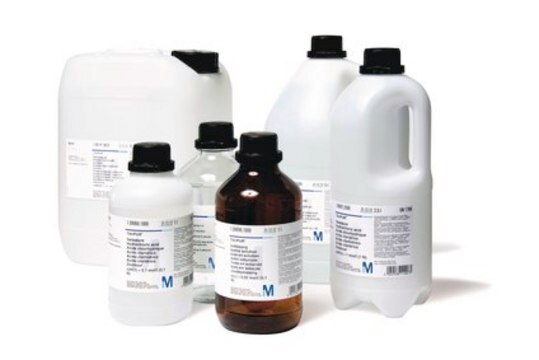19108
Lycopodium
Synonym(e):
Lycopode
Anmeldenzur Ansicht organisationsspezifischer und vertraglich vereinbarter Preise
Alle Fotos(1)
About This Item
Empfohlene Produkte
Anwendung
Lycopodium has been used as a hydrophobic coating on liquid marbles to make them non-adhering. It can be used as a pore-forming agent for the synthesis of porous hydroxyapatite and alumina ceramics.
Signalwort
Danger
H-Sätze
Gefahreneinstufungen
Flam. Sol. 1
Lagerklassenschlüssel
4.1B - Flammable solid hazardous materials
WGK
WGK 3
Flammpunkt (°F)
Not applicable
Flammpunkt (°C)
Not applicable
Persönliche Schutzausrüstung
Eyeshields, Gloves, type P3 (EN 143) respirator cartridges
Analysenzertifikate (COA)
Suchen Sie nach Analysenzertifikate (COA), indem Sie die Lot-/Chargennummer des Produkts eingeben. Lot- und Chargennummern sind auf dem Produktetikett hinter den Wörtern ‘Lot’ oder ‘Batch’ (Lot oder Charge) zu finden.
Besitzen Sie dieses Produkt bereits?
In der Dokumentenbibliothek finden Sie die Dokumentation zu den Produkten, die Sie kürzlich erworben haben.
[Experience with the conditioned-reflex treatment of alcoholism with small doses of Lycopodium selago].
N N Cherednik et al.
Vrachebnoe delo, (12)(12), 71-72 (1985-12-01)
[Galenical preparations from lycopodium oil (author's transl)].
A Pourrat et al.
Journal de pharmacie de Belgique, 35(3), 226-232 (1980-05-01)
Porous alumina ceramics produced with lycopodium spores as pore-forming agents.
Zivcova Z, et al.
J. Mater. Sci., 42(20), 8760-8764 (2007)
Maria Cláudia Silva et al.
Mycopathologia, 185(4), 675-684 (2020-06-06)
Candida tropicalis is a non-albicans Candida specie that causes candidosis in several countries, including Brazil. However, little is known about the mechanisms of drug resistance in C. tropicalis infections. In this study, we used clinical isolates of C. tropicalis susceptible
Development of porous ceramics by lycopodium using uniaxial pressing and sintering.
Serzane R, et al.
Processing and Application of Ceramics, 4(4), 231-235 (2010)
Unser Team von Wissenschaftlern verfügt über Erfahrung in allen Forschungsbereichen einschließlich Life Science, Materialwissenschaften, chemischer Synthese, Chromatographie, Analytik und vielen mehr..
Setzen Sie sich mit dem technischen Dienst in Verbindung.





